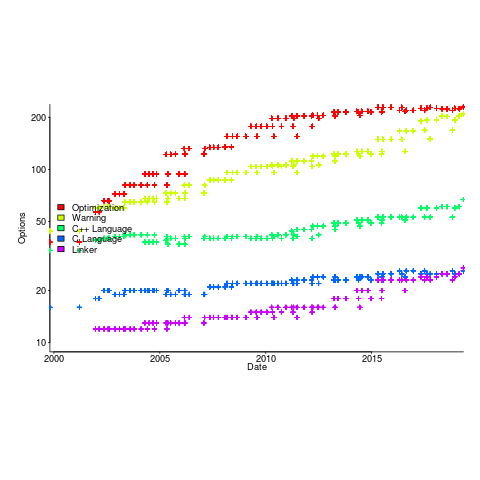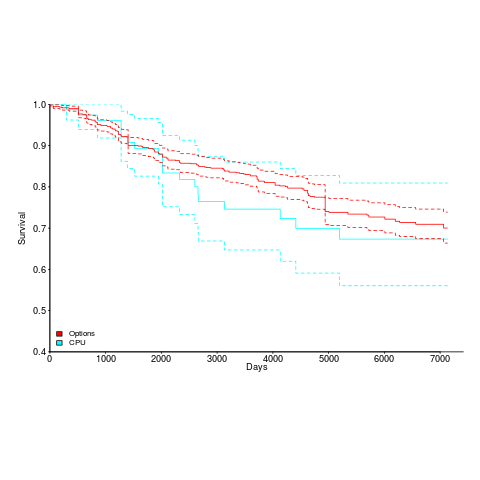Derek Jones from The Shape of Code
Like any actively maintained software, compilers get more complicated over time. Languages are still evolving, and options are added to control the support for features. New code optimizations are added, which don’t always work perfectly, and options are added to enable/disable them. New ways of combining object code and libraries are invented, and new options are added to allow the desired combination to be selected.
The web pages summarizing the options for gcc, for the 96 versions between 2.95.2 and 9.1 have a consistent format; which means they are easily scrapped. The following plot shows the number of options relating to various components of the compiler, for these versions (code+data):

The total number of options grew from 632 to 2,477. The number of new optimizations, or at least the options supporting them, appears to be leveling off, but the number of new warnings continues to increase (ah, the good ol’ days, when -Wall covered everything).
The last phase of a compiler is code generation, and production compilers are generally structured to enable new processors to be supported by plugging in an appropriate code generator; since version 2.95.2, gcc has supported 80 code generators.
What can be added can be removed. The plot below shows the survival curve of gcc support for processors (80 supported cpus, with support for 20 removed up to release 9.1), and non-processor specific options (there have been 1,091 such options, with 214 removed up to release 9.1); the dotted lines are 95% confidence internals.

